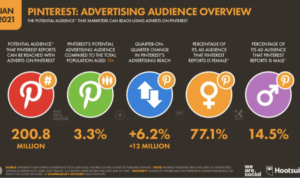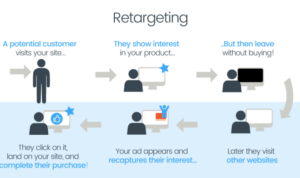Building Social Media Ad Campaigns kicks off the digital marketing journey with a bang, diving deep into the world of creating impactful online advertising strategies. Get ready to level up your business game!
Understanding Social Media Ad Campaigns
Social media ad campaigns are strategic efforts to promote products, services, or brands through paid advertising on various social media platforms. These campaigns utilize the targeting capabilities of social media platforms to reach specific audiences based on demographics, interests, behavior, and other factors.
Popular Social Media Platforms for Ad Campaigns
- Facebook: With its extensive user base and detailed targeting options, Facebook is a popular choice for running ad campaigns.
- Instagram: Known for its visual appeal, Instagram is ideal for engaging with younger audiences through compelling visual content.
- Twitter: Twitter’s real-time nature makes it suitable for timely promotions and engaging with followers through sponsored tweets.
- LinkedIn: Targeting professionals and B2B audiences, LinkedIn is effective for business-focused ad campaigns.
Importance of Social Media Ad Campaigns for Businesses
Social media ad campaigns play a crucial role in the marketing strategies of businesses for several reasons:
- Increased brand visibility and awareness among target audiences.
- Precise targeting options to reach specific demographics, interests, and behaviors.
- Enhanced engagement with potential customers through interactive ad formats.
- Measurable results and analytics to track the effectiveness of ad campaigns.
- Cost-effective advertising compared to traditional media channels.
Setting Campaign Objectives: Building Social Media Ad Campaigns

Setting clear objectives for a social media ad campaign is crucial for its success. This involves defining specific goals that you want to achieve through the campaign and outlining the metrics that will be used to measure its performance.
Types of Campaign Objectives
- Brand Awareness: This objective focuses on increasing the visibility and recognition of your brand among your target audience. It aims to create a positive impression and familiarity with your brand.
- Lead Generation: This objective is centered around capturing potential customers’ interest and collecting their contact information for future marketing efforts. It aims to build a database of leads for your sales team to follow up with.
- Conversions: This objective is about driving specific actions from your audience, such as making a purchase, signing up for a newsletter, or downloading a resource. It focuses on driving measurable results that contribute to your business’s bottom line.
Aligning Campaign Objectives with Marketing Goals
When setting campaign objectives, it is essential to align them with your overall marketing goals to ensure consistency and effectiveness. This involves understanding how each campaign objective contributes to the broader marketing strategy and how they support the achievement of your business goals. By aligning campaign objectives with marketing goals, you can ensure that your social media ad campaigns are strategic, targeted, and impactful in driving meaningful results for your business.
Target Audience Identification
Identifying the target audience is crucial for a successful ad campaign as it helps in creating tailored messages that resonate with the right people, leading to higher engagement and conversion rates.
Importance of Identifying Target Audience
- Allows for personalized messaging: Knowing the demographics and psychographics of your audience enables you to create content that speaks directly to their needs and interests.
- Increases campaign effectiveness: By targeting the right audience, you can maximize the impact of your ad spend and achieve better results.
- Improves ROI: When your ads are relevant to your target audience, you are more likely to see a higher return on investment.
Methods for Researching and Defining Target Audience
- Conduct surveys and interviews: Gathering direct feedback from your existing customers can provide valuable insights into their preferences and behaviors.
- Utilize social media analytics: Platforms like Facebook and Instagram offer tools to analyze audience demographics and interests based on engagement with your content.
- Utilize market research reports: Industry reports and studies can help you understand broader trends and preferences within your target market.
Examples of Demographics and Psychographics Influence
- Demographics: Age, gender, location, income level, and education can impact how you target your audience. For example, a skincare brand targeting women aged 25-35 will create different ads compared to a retirement planning service targeting individuals over 50.
- Psychographics: Personality traits, values, interests, and lifestyle choices play a role in ad targeting. A fitness app may tailor ads differently for users who are fitness enthusiasts versus users who are looking to start a healthier lifestyle.
Ad Creatives and Copywriting

When it comes to social media ad campaigns, ad creatives and copywriting play a crucial role in grabbing the attention of your target audience and driving engagement. Compelling visuals and persuasive ad copy can make a significant impact on the success of your campaign by effectively conveying your message and encouraging action.
Creating Engaging Visuals
To create engaging visuals for your social media ad campaigns, follow these tips:
- Use high-quality images or videos that are relevant to your target audience and align with your brand.
- Incorporate eye-catching colors and design elements that stand out in a crowded feed.
- Keep your visuals simple and easy to understand to quickly communicate your message.
- Test different types of visuals to see what resonates best with your audience and drives the most engagement.
Crafting Persuasive Ad Copy
When writing ad copy for your social media campaigns, consider the following tips:
- Start with a strong headline that grabs attention and entices users to read more.
- Focus on the benefits of your product or service rather than just features.
- Use clear and concise language to communicate your message effectively.
- Incorporate a call-to-action that prompts users to take the desired action, such as “Shop Now” or “Learn More”.
Examples of Successful Ad Creatives
Some examples of successful ad creatives that have driven engagement and conversions include:
- A carousel ad showcasing different product features with a compelling headline and clear call-to-action.
- An animated video highlighting a customer testimonial and the benefits of a service, paired with persuasive ad copy.
- An eye-catching image ad with a limited-time offer and a sense of urgency to drive immediate action.
Budgeting and Bidding Strategies
When it comes to social media ad campaigns, budgeting and choosing the right bidding strategies are crucial for success. It’s important to allocate your budget effectively and select the bidding options that align with your campaign objectives to maximize your return on investment (ROI).
Different Bidding Options
There are various bidding options available for social media ad campaigns, each with its own advantages and considerations:
- CPC (Cost-Per-Click): With CPC bidding, you only pay when users click on your ad. This option is ideal for driving website traffic and generating leads.
- CPM (Cost-Per-Thousand Impressions): CPM bidding charges you for every 1,000 impressions your ad receives. It’s suitable for increasing brand awareness and visibility.
- CPA (Cost-Per-Acquisition): CPA bidding focuses on conversions, allowing you to pay based on specific actions taken by users, such as making a purchase or signing up for a service.
Optimizing Budgets for Maximum ROI
Optimizing your budget involves strategically allocating funds to different aspects of your ad campaign to achieve the best results. Here are some tips for maximizing ROI:
- Set clear campaign objectives and KPIs to guide your budget allocation.
- Monitor your ad performance and adjust budgets based on real-time data to optimize for top-performing ads.
- Test different bidding strategies and budget levels to identify the most cost-effective approach for your campaign goals.
- Utilize targeting options to reach your desired audience effectively and reduce wasted ad spend.
Ad Scheduling and Monitoring
In the world of social media ad campaigns, ad scheduling and monitoring play a crucial role in the success of your marketing efforts. By strategically timing your ads and keeping a close eye on their performance, you can maximize engagement and optimize your ROI.
Optimal Timing for Ads
When it comes to scheduling ads, it’s essential to consider the behavior and preferences of your target audience. By analyzing data on when your audience is most active on social media platforms, you can determine the best times to run your ads. This can lead to higher click-through rates and conversions, as your ads are more likely to be seen by interested users.
- Utilize insights from platform analytics tools to identify peak engagement times.
- Experiment with different scheduling options to find the optimal timing for your ads.
- Consider time zone differences and adjust your ad schedule accordingly for different regions.
Monitoring Ad Performance, Building Social Media Ad Campaigns
Monitoring ad performance is essential for gauging the effectiveness of your campaigns and making necessary adjustments to improve results. By tracking key metrics and analyzing data, you can identify trends, strengths, and areas for improvement in your ad campaigns.
- Regularly check metrics such as click-through rate, conversion rate, and cost per acquisition.
- Utilize A/B testing to compare different ad variations and determine which perform best.
- Set up conversion tracking to attribute sales or leads to specific ads and campaigns.
Tools for Tracking Ad Metrics
There are various tools and techniques available to help you track ad metrics and analyze campaign results effectively. From built-in platform analytics to third-party software, these resources can provide valuable insights to inform your marketing strategy.
- Use Facebook Ads Manager or Google Analytics to monitor ad performance and track key metrics.
- Implement UTM parameters to track the source of website traffic generated by your ads.
- Consider using tools like SEMrush or Hootsuite for more in-depth analysis and reporting.





